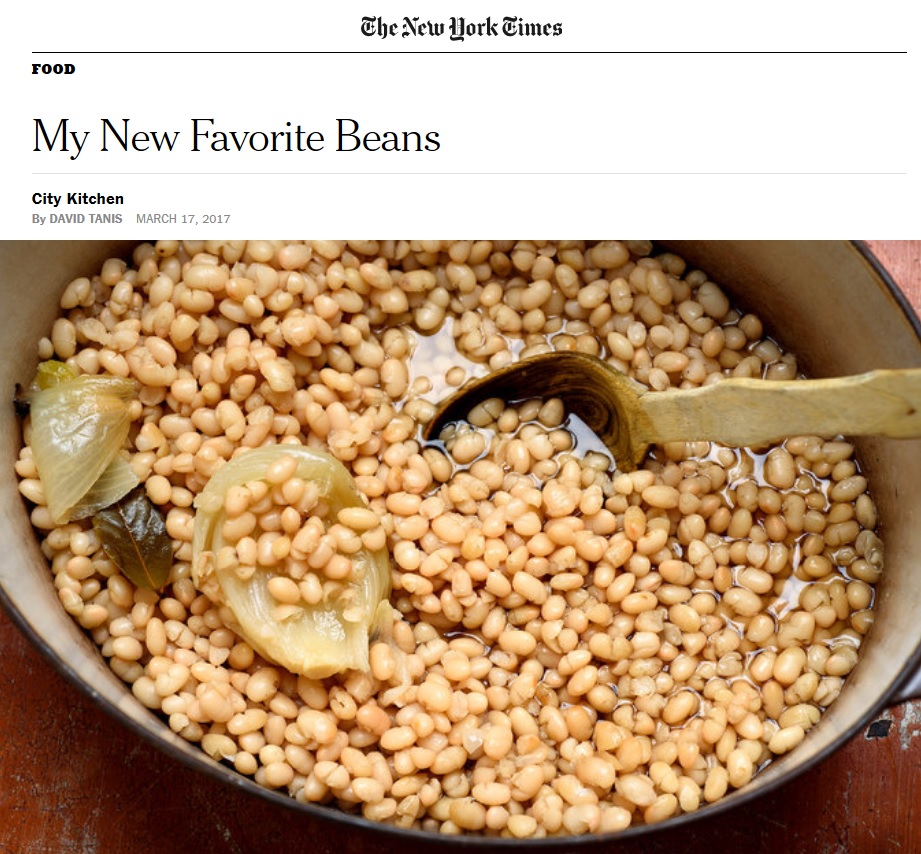Do you know that feeling of satisfaction when a friend discovers for themselves a favorite thing that you have known about and loved for years? That is how we felt reading this article.
David Tanis, we are so glad you have Columbused Purgatorio Beans. Really! We couldn’t be more thrilled to hear you love these Italian beans just as much as we do. After all, we at Gustiamo have been importing them for over a decade!
“I always keep a large supply of dried beans in the pantry… My new favorite heirloom white beans are the small, round Italian purgatory beans, fagioli del purgatorio, which have a tender, creamy texture. Purgatory beans have been cultivated in the Lazio region of Italy for centuries, ever since the first ones arrived from the New World. They are eaten year-round… The custom is to cook purgatory beans quite simply, simmered with a few sage leaves, and eat them plain, with a sprinkling of salt and a generous spoonful of fruity olive oil. Actually, I would say that’s the perfect way to eat any good dried beans. From a purist’s point of view, why would they need anything else?
Still, white beans take well to embellishment and are welcome in any season. They make wonderful summertime salads, combined with red onions, a touch of anchovy, cherry tomatoes and a splash of red wine vinegar. I like to bake them with spicy fennel sausage and roasted peppers in autumn. In winter, all manner of white bean soups are consumed at our house on a regular basis… Just now, with the arrival of spring, I still crave white beans, but in a fresh, lighter rendition. My plan was to make a vegetarian stew featuring purgatory beans, fennel and peas, showered with fresh herbs. Then came a snowstorm, and the recent spell of unseasonably warm days was just a memory piled under heaps of snow and ice.”
Bravissimo Signor Tanis! We couldn’t agree more. Our Purgatorio Beans are grown right next to Lazio in Umbria on the family farm La Valletta and are EVERYTHING you just described.
